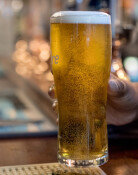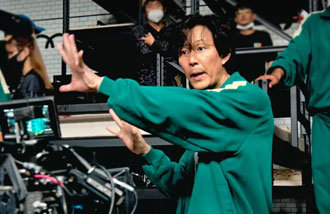RGT: "Taking Korean Autonomous Service Robots to the World"
RGT: "Taking Korean Autonomous Service Robots to the World"
Posted December. 30, 2024 11:18,
Updated December. 30, 2024 11:18
The robotics field has long been recognized as a key industry for the future, alongside AI, with both mid-sized and major companies in the global arena pursuing initiatives in this area. Robotics is expected to play a leading role in various sectors, including the manufacturing, healthcare, logistics, and service industries. Despite the challenges, startups are also making bold moves in this highly-demanding sector, driven by unique ideas and advanced technologies.
RGT (Robot Global Team) is a rising startup that specializes in service robots, developed entirely with domestic technologies. The company handles the entire process—from the planning and development to the production, distribution, and management. As it achieves significant milestones, RGT is making its mark in the robotics world. We spoke with CEO Ho-jung Jung to learn more about his vision for the company.
What is RGT?
RGT is a startup that was founded in 2018, specializing in autonomous service robots. The company develops a variety of robots, including the serving robots commonly seen in large venues, guide robots, cleaning robots, delivery robots, and security robots. In addition to autonomous driving technologies, RGT develops and implements robotic automation systems. These systems cover the operational aspects of robots, such as the cooking automation solutions developed for culinary robots.
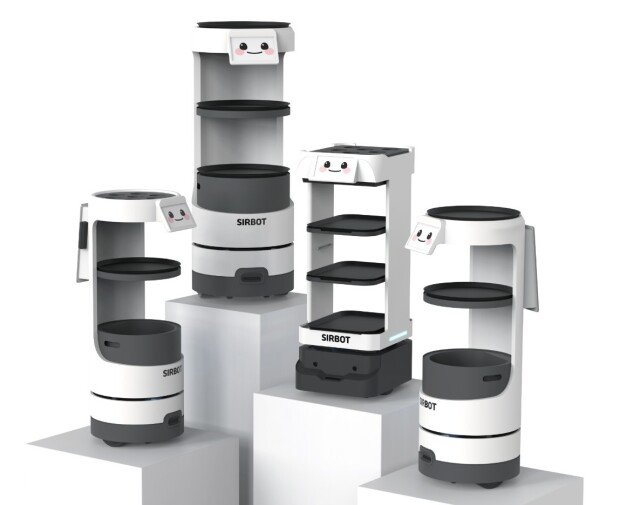 RGT’s serving robot "SIRBOT" / Source: RGT
RGT’s serving robot "SIRBOT" / Source: RGT
The name "RGT," which stands for "Robot Global Team," reflects the company’s ambition to bring everyday robots to the global market. The company currently exports service robots to over 12 countries, including the US, UK, China, Vietnam, and Pakistan, working with the top local talent in each region.
What motivated you to start a robotics business, given the challenges that startups face in this field?
My motivation wasn’t particularly grand. During my studies in autonomous driving, my aunt was running a franchise business in the US at the time (althoug
h she has since closed it). Despite decent sales and an increasing revenue, she faced significant challenges in relation to workforce management. Since I wanted to visit her and assess the situation firsthand, I traveled to the US to observe the operations on-site.
After visiting her to assess the situation, I realized the constant employee turnover was preventing her from focusing on business operations. I concluded that reducing the labor intensity through standardization and automation was a critical step. This inspired me to create serving robots, using my expertise in autonomous driving. After completing further research on the serving robot markets in the US, Japan, and Australia, I decided to found RGT in 2018.
What types of service robots is RGT currently developing and supplying?
Our serving robot, which is now in its third generation (SIRBOT), is deployed in various domestic and international locations. Beyond serving robots, we provide logistics robots for factory operations, promotional/sales robots for department stores and large retailers, and we are in the early stages of providing guide robots for large spaces and security/patrol robots for buildings. Each robot is equipped with tailored software and systems developed in-house, grounded in autonomous driving technologies.
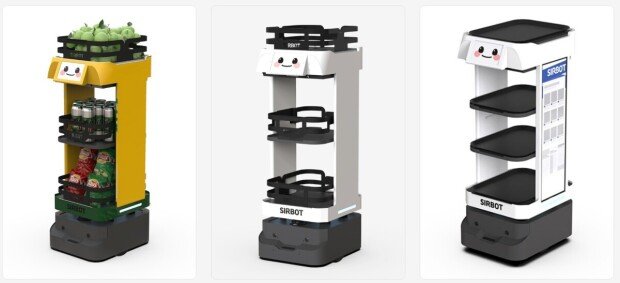 RGT’s autonomous promotional robots for retail environments / Source: RGT
RGT’s autonomous promotional robots for retail environments / Source: RGT
Can you share a success story where RGT robots have made a significant impact on a client’s business?
One memorable case involved an elderly couple who were running a small restaurant. The husband had mobility issues, making it difficult for them to manage the business. They decided to purchase our SIRBOT after researching serving robots. When I revisited them a few months later, they expressed their gratitude, saying that the robot had made their lives significantly easier, and even serving me a meal to show their appreciation. Experiences like this have reaffirmed the value of our work and motivated us to improve further. Today, over 2,000 RGT robots are assisting our customers nationwide.
The serving robot sector is a highly competitive market, with numerous major corporations and promising startups, both domestically and internationally, actively participating in the field. What sets RGT's serving robot, 'SIRBOT,' apart from the others in this crowded field?
Most autonomous serving robots sold by domestic corporations or startups are primarily products from China, due to their superior cost-to-performance ratio. In contrast, RGT's robots are autonomous robots developed and manufactured entirely with 100% Korean technologies, specifically tailored for the service sector.
Service environments are often designed with transparent and reflective materials, such as glass walls or shiny flooring, which can disrupt the navigation of robots that use optical sensors. However, RGT's service robots are optimized to ensure stable autonomous navigation, even in these challenging settings.
Furthermore, RGT's autonomous robots can record and predict the movement paths of nearby objects, such as people, to avoid overlapping trajectories. Unlike industrial robots, service robots must anticipate the movements of humans and adapt accordingly, by stopping or rerouting in order to ensure minimal disruption. RGT's service robots have been designed with this capability in mind.
What is your vision for the coexistence of robots and humans in the workplace?
Some clients ask us whether deploying one serving robot can reduce their staffing costs by eliminating a worker. While this is possible in some cases, we generally advise against it. Instead, we recommend using robots to alleviate labor-intensive tasks so that staff can focus on customer interactions, such as greeting guests, smiling, and engaging in conversation—something that robots cannot replicate. For example, in the restaurant run by the elderly couple that I mentioned earlier, the robot handles serving while the owner interacts with his regular customers.
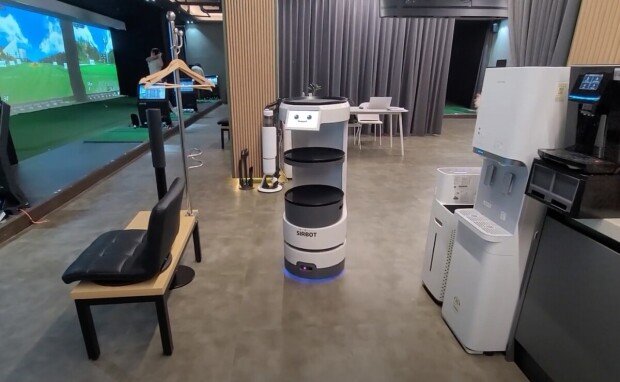 RGT’s serving robot "SIRBOT" at a screen golf facility / Source: RGT
RGT’s serving robot "SIRBOT" at a screen golf facility / Source: RGT
What types of culinary robots is RGT developing?
In 2019, we developed our first coffee barista robot, which we delivered to a public institution. It was designed for an unmanned café where the robot handled the orders, payments, and coffee preparation, complete with a robotic arm that served beverages to customers. We’ve also created frying robots for cooking chicken, fries, donuts, and pork cutlets, as well as noodle-making robots. For these culinary robots, we integrate robotic arms that we obtain from specialist manufacturers with our custom-developed grippers and automation solutions.
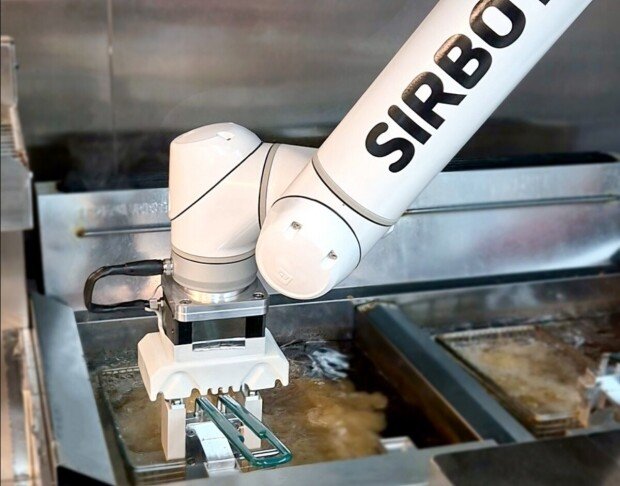 RGT’s frying and culinary robots / Source: RGT
RGT’s frying and culinary robots / Source: RGT
What is your current production capacity?
We currently collaborate with multiple domestic robot manufacturing facilities to produce about 200 units monthly. Domestic production offers advantages in terms of the technical and after-sales support, compared to the companies importing foreign robots. Although we are still faced with resource shortages, 70% of our 30 employees are developers, and we are aiming to expand our technical team.
How is the SBA supporting RGT’s global expansion?
The SBA is helping us to enter the Japanese market by connecting us with a local company to conduct proof-of-concept (PoC) testing and by providing logistical support for our robot deployment. This is our second attempt to enter Japan, and we are optimistic about achieving positive results with the SBA’s assistance.
What are RGT’s goals for 2025?
As a startup, we are always striving to achieve more, but we consider this year’s achievements to be satisfactory. In 2025, our priorities will include increasing our revenue, launching new products, and establishing our brand as a leading startup. We are also planning to participate in CES 2025 to showcase our latest innovations.
by Moon-gyu Lee (munch@itdonga.com)
RGT (Robot Global Team) is a rising startup that specializes in service robots, developed entirely with domestic technologies. The company handles the entire process—from the planning and development to the production, distribution, and management. As it achieves significant milestones, RGT is making its mark in the robotics world. We spoke with CEO Ho-jung Jung to learn more about his vision for the company.
What is RGT?
RGT is a startup that was founded in 2018, specializing in autonomous service robots. The company develops a variety of robots, including the serving robots commonly seen in large venues, guide robots, cleaning robots, delivery robots, and security robots. In addition to autonomous driving technologies, RGT develops and implements robotic automation systems. These systems cover the operational aspects of robots, such as the cooking automation solutions developed for culinary robots.

The name "RGT," which stands for "Robot Global Team," reflects the company’s ambition to bring everyday robots to the global market. The company currently exports service robots to over 12 countries, including the US, UK, China, Vietnam, and Pakistan, working with the top local talent in each region.
What motivated you to start a robotics business, given the challenges that startups face in this field?
My motivation wasn’t particularly grand. During my studies in autonomous driving, my aunt was running a franchise business in the US at the time (althoug
h she has since closed it). Despite decent sales and an increasing revenue, she faced significant challenges in relation to workforce management. Since I wanted to visit her and assess the situation firsthand, I traveled to the US to observe the operations on-site.
After visiting her to assess the situation, I realized the constant employee turnover was preventing her from focusing on business operations. I concluded that reducing the labor intensity through standardization and automation was a critical step. This inspired me to create serving robots, using my expertise in autonomous driving. After completing further research on the serving robot markets in the US, Japan, and Australia, I decided to found RGT in 2018.
What types of service robots is RGT currently developing and supplying?
Our serving robot, which is now in its third generation (SIRBOT), is deployed in various domestic and international locations. Beyond serving robots, we provide logistics robots for factory operations, promotional/sales robots for department stores and large retailers, and we are in the early stages of providing guide robots for large spaces and security/patrol robots for buildings. Each robot is equipped with tailored software and systems developed in-house, grounded in autonomous driving technologies.

Can you share a success story where RGT robots have made a significant impact on a client’s business?
One memorable case involved an elderly couple who were running a small restaurant. The husband had mobility issues, making it difficult for them to manage the business. They decided to purchase our SIRBOT after researching serving robots. When I revisited them a few months later, they expressed their gratitude, saying that the robot had made their lives significantly easier, and even serving me a meal to show their appreciation. Experiences like this have reaffirmed the value of our work and motivated us to improve further. Today, over 2,000 RGT robots are assisting our customers nationwide.
The serving robot sector is a highly competitive market, with numerous major corporations and promising startups, both domestically and internationally, actively participating in the field. What sets RGT's serving robot, 'SIRBOT,' apart from the others in this crowded field?
Most autonomous serving robots sold by domestic corporations or startups are primarily products from China, due to their superior cost-to-performance ratio. In contrast, RGT's robots are autonomous robots developed and manufactured entirely with 100% Korean technologies, specifically tailored for the service sector.
Service environments are often designed with transparent and reflective materials, such as glass walls or shiny flooring, which can disrupt the navigation of robots that use optical sensors. However, RGT's service robots are optimized to ensure stable autonomous navigation, even in these challenging settings.
Furthermore, RGT's autonomous robots can record and predict the movement paths of nearby objects, such as people, to avoid overlapping trajectories. Unlike industrial robots, service robots must anticipate the movements of humans and adapt accordingly, by stopping or rerouting in order to ensure minimal disruption. RGT's service robots have been designed with this capability in mind.
What is your vision for the coexistence of robots and humans in the workplace?
Some clients ask us whether deploying one serving robot can reduce their staffing costs by eliminating a worker. While this is possible in some cases, we generally advise against it. Instead, we recommend using robots to alleviate labor-intensive tasks so that staff can focus on customer interactions, such as greeting guests, smiling, and engaging in conversation—something that robots cannot replicate. For example, in the restaurant run by the elderly couple that I mentioned earlier, the robot handles serving while the owner interacts with his regular customers.

What types of culinary robots is RGT developing?
In 2019, we developed our first coffee barista robot, which we delivered to a public institution. It was designed for an unmanned café where the robot handled the orders, payments, and coffee preparation, complete with a robotic arm that served beverages to customers. We’ve also created frying robots for cooking chicken, fries, donuts, and pork cutlets, as well as noodle-making robots. For these culinary robots, we integrate robotic arms that we obtain from specialist manufacturers with our custom-developed grippers and automation solutions.

What is your current production capacity?
We currently collaborate with multiple domestic robot manufacturing facilities to produce about 200 units monthly. Domestic production offers advantages in terms of the technical and after-sales support, compared to the companies importing foreign robots. Although we are still faced with resource shortages, 70% of our 30 employees are developers, and we are aiming to expand our technical team.
How is the SBA supporting RGT’s global expansion?
The SBA is helping us to enter the Japanese market by connecting us with a local company to conduct proof-of-concept (PoC) testing and by providing logistical support for our robot deployment. This is our second attempt to enter Japan, and we are optimistic about achieving positive results with the SBA’s assistance.
What are RGT’s goals for 2025?
As a startup, we are always striving to achieve more, but we consider this year’s achievements to be satisfactory. In 2025, our priorities will include increasing our revenue, launching new products, and establishing our brand as a leading startup. We are also planning to participate in CES 2025 to showcase our latest innovations.
by Moon-gyu Lee (munch@itdonga.com)
Headline News
- Conflict mounts over removing rebellion crime from impeachment bill
- 55 percent of Seocho apartment transactions in October involved property gifting
- Richer people live up to nine more healthy lives
- Zelenskyy claims N. Korean troops lost heavy casualties in Kursk
- Man City secures 2 consecutive wins with Haaland leading the charge






